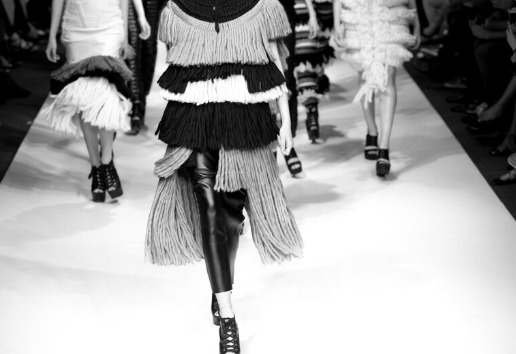London transforms into a high-octane catwalk twice a year. London Fashion Week, which takes place in February and September, is notable for turning city streets into a vibrant exhibition of creativity, legacy, and ambition. Since its inception in 1984, this event, which is hosted under the auspices of the British Fashion Council, has established itself as a mainstay of the world fashion calendar; however, the phrase “twice a year” hardly adequately conveys its impact.
The straightforward response to the question of how frequently London Fashion Week takes place each year is two. However, that figure is just the tip of the iceberg. Every edition, held in the center of London, is incredibly influential. Buyers, editors, influencers, and stars from all sectors of the creative economy attend the carefully planned events where more than 250 designers present their collections.
| Attribute | Details |
|---|---|
| Event | London Fashion Week (LFW) |
| Frequency | Twice a year – February and September |
| Location | London, England |
| First Held | 1984 |
| Major Participants | Designers, retailers, buyers, celebrities, media |
| Key Shows | Harris Reed, Richard Quinn, Di Petsa, Central Saint Martins |
| Related Events | London Fashion Week Men’s (June), Fashion East, NEWGEN |
| Organizer | British Fashion Council |
| Official Website | londonfashionweek.co.uk |
London Fashion Week follows the global retail rhythm by scheduling its shows in Feb and September. The autumn/winter and spring/summer collections are presented during these carefully selected months, which gives media outlets and retailers six months to organize their campaigns, inventory, and content. This chronology continues to be incredibly successful in establishing the mood for the upcoming seasons.

The true allure of London Fashion Week, however, goes far beyond this cyclical pattern. The event’s reach has grown in recent years thanks to digital activations and satellite shows, such as London Fashion Week Men’s in June. LFW’s impact now lasts all year long thanks to livestreamed runways, virtual displays, and online panels, which make it remarkably flexible in both format and audience.
Legacy houses and daring newcomers coexist on the runway created by the event through programs like NEWGEN and Fashion East. These platforms gave rise to designers like Simone Rocha and JW Anderson, who used particularly avant-garde techniques to shape contemporary aesthetics. London’s fashion identity now revolves around this feeling of disruption and opportunity.
Notably, the cultural significance of London Fashion Week goes well beyond clothing. It has developed into a platform for expression, activism, and identity over time. While seasoned designers like Vivienne Westwood have used the runway as a platform for political defiance, artists like Harris Reed have used it to investigate gender fluidity. London Fashion Week has remained remarkably relevant due to these creative risks, particularly among Gen Z and up-and-coming creatives.
The presence of celebrities highlights this cultural appeal. People like Emma Corrin, Zendaya, and Florence Pugh are active contributors to the fashion conversation rather than merely being front row faces. Some, like Rihanna, headlining the shows with their own labels, while others start collaborations or serve as campaign stars. Because of their participation, the event becomes a multifaceted experience that combines commentary, commerce, and performance.
However, pressure comes along with this status. Sustainability activists have recently questioned whether sticking to a twice-yearly schedule is feasible. Concerns regarding the environmental impact of continuous production cycles have been raised by designers like Stella McCartney. According to conversations within the British Fashion Council and affiliated organizations, the strict calendar may eventually give way to more adaptable, technology-driven strategies.
London Fashion Week continues to be incredibly effective at keeping fashion at the forefront of cultural and economic discussions in spite of the criticism. It gained notoriety in February 2024 when it opened at the London Stock Exchange, a symbolic action that highlighted the real influence of fashion on finance. The British Fashion Council estimates that the fashion industry in the UK generates £26 billion in economic output, with London Fashion Week acting as a major source of income.
LFW’s twice-yearly cadence provides more than just predictability. It makes room for change. Every edition offers editors, designers, and even customers a chance to rethink, reevaluate, and rethink. In this sense, it’s a biannual checkpoint for creativity rather than just an event.
